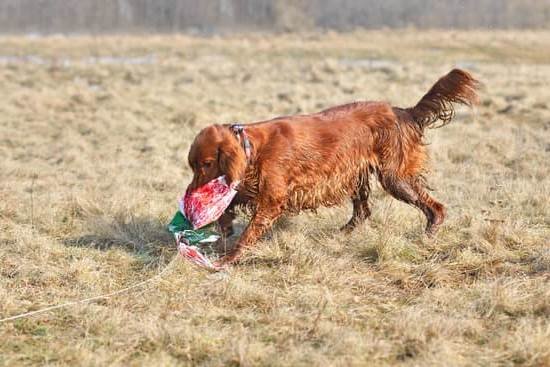When it comes to crate training a dog, there is no one-size-fits-all answer. Every dog is different and will respond to different training methods. However, there are some general tips that can help you crate train your dog successfully.
The first step is to introduce your dog to the crate. You can do this by placing the crate in a quiet, comfortable spot in your home and putting a few treats inside. As your dog begins to explore the crate, praise her and give her a few more treats.
Once your dog is comfortable with the crate, start using it as a place for her to sleep. Put her bed inside the crate and gradually increase the amount of time she spends in the crate. Once she is sleeping comfortably in the crate, you can start using it as a place for her to stay when you’re not home.
If your dog begins to whine or bark in the crate, don’t give in and let her out. This will only reinforce the behavior. Instead, wait until she stops whining or barking and then release her from the crate.
It’s important to be consistent with crate training. If you allow your dog to get out of the crate when she whines or barks, she will learn that this is the best way to get your attention.
Training Dog Without Crate
One of the most common questions people have about dog training is whether or not it’s necessary to use a crate. Some people think that crating a dog is cruel, while others believe that it’s the only way to effectively train a dog. The truth is that you can train a dog without using a crate, but it may be more difficult.
The first step in training a dog is to establish rules and boundaries. You need to be consistent with your commands and make sure that your dog understands what you expect from him. One of the easiest ways to do this is to use a crate. A crate can be a safe place for your dog to retreat to when he’s feeling overwhelmed or when he needs a break from all the activity. It can also be used as a place to put your dog when you’re not able to watch him closely.
If you’re not comfortable using a crate, there are other ways to train your dog. One of the most important things to remember is to be consistent with your commands. You should also be patient and take the time to properly train your dog. It may take a little longer, but it’s definitely possible to train a dog without using a crate.
Is Crate Training Good For Dogs
?
Crate training is a popular way to housebreak dogs, and it has benefits beyond just housebreaking. A crate can provide a dog with a safe, comfortable place to rest and relax.
Crate training should not be used as a punishment tool. The crate should be seen as a positive place for a dog to be. Dogs should be introduced to the crate slowly, and should be allowed to enter and exit the crate on their own.
The crate should be large enough for the dog to stand up, turn around, and lie down in. The dog should have a comfortable bed or blanket in the crate.
When crate training a dog, it is important to establish a routine. The dog should be taken outside to relieve himself immediately after waking up, after eating, and after playing.
If a dog is properly crate trained, he will not want to soil his crate. Crate training can be a helpful tool in housebreaking a dog, and it can also provide a dog with a safe place to rest and relax.
How To Train Your Dog To Sleep In His Crate
There are a lot of benefits to having your dog sleep in his crate. A crate can provide your dog with a sense of security and can help with house training. It can also be a great place for your dog to sleep when you’re not home.
If you’re training your dog to sleep in his crate, it’s important to be consistent and to praise your dog when he does something right. Here are a few tips for training your dog to sleep in his crate:
1. Start by putting your dog’s food in the crate. This will help him to associate the crate with something positive.
2. Once your dog is comfortable eating his food from the crate, start putting him in the crate for short periods of time. Gradually increase the amount of time he spends in the crate.
3. If your dog starts to whine or bark in the crate, don’t let him out until he’s quiet. Once he’s quiet, praise him and let him out of the crate.
4. Make sure your dog has plenty of water and access to a bathroom area when he’s in the crate.
5. Never use the crate as a punishment. The crate should be a place your dog looks forward to going to.
If you follow these tips, your dog will be sleeping in his crate in no time!
Crate Trained Dog Barking At Night
There are a few potential reasons why your crate trained dog is barking at night. One possibility is that your dog is experiencing anxiety or separation anxiety when left alone in the crate. Dogs who are crate trained often form a strong attachment to their crate and can feel anxious and upset when left alone in it. If this is the case, you may need to work on gradually increasing your dog’s tolerance for being left alone in the crate.
Another possibility is that your dog is trying to tell you that he needs to go to the bathroom. If your dog has been successfully crate trained, he should only need to go to the bathroom when he is let out of the crate. If your dog is barking at night because he needs to go to the bathroom, you’ll need to start taking him outside more frequently.
Finally, it’s also possible that your dog is simply bored when left alone in the crate. If your dog has been successfully crate trained, he should only be in the crate for short periods of time. If your dog is barking at night because he’s bored, you’ll need to start leaving him out of the crate for longer periods of time.

Welcome to the blog! I am a professional dog trainer and have been working with dogs for many years. In this blog, I will be discussing various topics related to dog training, including tips, tricks, and advice. I hope you find this information helpful and informative. Thanks for reading!





